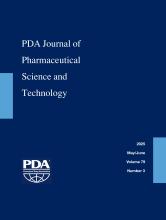Abstract
This article focuses on describing control measures intended to reduce the risk of glove damages, which can be linked to contamination (particulate, microbiological). Specific risks involving gloves are analysed, assessed and minimized by means of appropriate control measures. The aim is to demonstrate that the risk of contamination via isolator gloves cannot be mitigated by a single action, but rather that a combination of several preventative measures is required.
Important control measures for safe handling of gloves at barrier systems include the observation of glove functional use, personnel training and monitoring control measures. This observation of the glove functional use can represent a higher or lower GMP risk for the product depending on the intervention.
The handling of the gloves and their use should be documented accordingly and evaluated in a risk assessment. The risk analysis defines measures that are part of the Quality Risk Management for Gloves and contribute to the safe production of sterile pharmaceuticals.
This raises the question as to the point from which an isolator is at risk of microbiological contamination following damage to a glove, or what size of pinhole in a glove represents a risk. This article works on the assumption that this question can only be answered by means of glove quality risk management.
- glove
- isolator
- risk approach
- visual inspection
- risk minimization
- physical test
- bioburden control
- isolator contamination
- critical pinhole in gloves
- good manufacturing practice
- glove test
- contamination control strategy CCS
- Received May 9, 2025.
- Accepted May 28, 2025.
PDA members receive access to all articles published in the current year and previous volume year. Institutional subscribers received access to all content. Log in below to receive access to this article if you are either of these.
If you are neither or you are a PDA member trying to access an article outside of your membership license, then you must purchase access to this article (below). If you do not have a username or password for JPST, you will be required to create an account prior to purchasing.
Full issue PDFs are for PDA members only.
Note to pda.org users
The PDA and PDA bookstore websites (www.pda.org and www.pda.org/bookstore) are separate websites from the PDA JPST website. When you first join PDA, your initial UserID and Password are sent to HighWirePress to create your PDA JPST account. Subsequent UserrID and Password changes required at the PDA websites will not pass on to PDA JPST and vice versa. If you forget your PDA JPST UserID and/or Password, you can request help to retrieve UserID and reset Password below.






